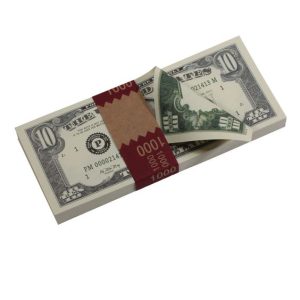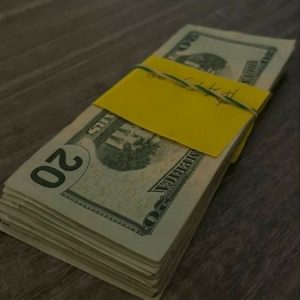10 USD Bills For Sale Online
Price range: £ 1,000.00 through £ 5,000.00Order Now
Email: info@atmtestedbanknote.com
Phone/ Whatsapp: +44 7930324432
Phone: +1 (530) 567-7449
Weblink: https://atmtestedbanknote.com
From Wikipedia, the free encyclopedia
“USD” redirects here. For other uses, see USD (disambiguation).
United States dollar
Federal Reserve Notes (obverse)
ISO 4217
Code USD (numeric: 840)
Subunit 0.01
Unit
Symbol $, US$, U$
Nickname
List
Denominations
Superunit
10 Eagle
100 Union (Proposed, never issued)
Subunit
1⁄10 Dime
1⁄100 Cent
1⁄1000 Mill
Symbol
Cent ¢
Mill ₥
Banknotes
Freq. used $1, $5, $10, $20, $50, $100
Rarely used $2 (still printed); $500, $1,000, $5,000, $10,000 (discontinued, but still legal tender); $100,000 (discontinued, not legal tender, and only used for specific purposes)
Coins
Freq. used 1¢, 5¢, 10¢, 25¢
Rarely used 50¢, $1 (still minted); 1⁄2¢, 2¢, 3¢, 20¢, $2.50, $3, $5, $10, $20 (discontinued, but still legal tender)
Demographics
Date of introduction April 2, 1792; 232 years ago[1]
Replaced Continental currency
Various foreign currencies, including:
Pound sterling
Spanish dollar
User(s) see § Formal users (11), § Informal users (7)
Issuance
Central bank Federal Reserve
Website federalreserve.gov
Printer Bureau of Engraving and Printing
Website bep.gov
Mint United States Mint
Website usmint.gov
Valuation
Inflation 2.9% or 2.5%
Source BLS (July 2024) or BEA (June 2024)
Method CPI or PCE
Pegged by see § Pegged currencies
The United States dollar (symbol: $; currency code: USD; also abbreviated US$ to distinguish it from other dollar-denominated currencies; referred to as the dollar, U.S. dollar, American dollar, or colloquially buck) is the official currency of the United States and several other countries. The Coinage Act of 1792 introduced the U.S. dollar at par with the Spanish silver dollar, divided it into 100 cents, and authorized the minting of coins denominated in dollars and cents. U.S. banknotes are issued in the form of Federal Reserve Notes, popularly called greenbacks due to their predominantly green color.
The monetary policy of the United States is conducted by the Federal Reserve System, which acts as the nation’s central bank.
The U.S. dollar was originally defined under a bimetallic standard of 371.25 grains (24.057 g) (0.7734375 troy ounces) fine silver or, from 1834,[2] 23.22 grains (1.505 g) fine gold, or $20.67 per troy ounce. The Gold Standard Act of 1900 linked the dollar solely to gold. From 1934, its equivalence to gold was revised to $35 per troy ounce. In 1971 all links to gold were repealed.[3]
The U.S. dollar became an important international reserve currency after the First World War, and displaced the pound sterling as the world’s primary reserve currency by the Bretton Woods Agreement towards the end of the Second World War. The dollar is the most widely used currency in international transactions,[4] and a free-floating currency. It is also the official currency in several countries and the de facto currency in many others,[5][6] with Federal Reserve Notes (and, in a few cases, U.S. coins) used in circulation.
As of February 10, 2021, currency in circulation amounted to US$2.10 trillion, $2.05 trillion of which is in Federal Reserve Notes (the remaining $50 billion is in the form of coins and older-style United States Notes).[7]
As of September 20, 2023, the Federal Reserve estimated that the total amount of currency in circulation was approximately US$2.33 trillion.[8]
Overview
In the Constitution
Article I, Section 8 of the U.S. Constitution provides that Congress has the power “[t]o coin money.”[9] Laws implementing this power are currently codified in Title 31 of the U.S. Code, under Section 5112, which prescribes the forms in which the United States dollars should be issued.[10] These coins are both designated in the section as “legal tender” in payment of debts.[10] The Sacagawea dollar is one example of the copper alloy dollar, in contrast to the American Silver Eagle which is pure silver. Section 5112 also provides for the minting and issuance of other coins, which have values ranging from one cent (U.S. Penny) to 100 dollars.[10] These other coins are more fully described in Coins of the United States dollar.
Article I, Section 9 of the Constitution provides that “a regular Statement and Account of the Receipts and Expenditures of all public Money shall be published from time to time”,[11] which is further specified by Section 331 of Title 31 of the U.S. Code.[12] The sums of money reported in the “Statements” are currently expressed in U.S. dollars, thus the U.S. dollar may be described as the unit of account of the United States.[13] “Dollar” is one of the first words of Section 9, in which the term refers to the Spanish milled dollar, or the coin worth eight Spanish reales.
Showing all 4 results

Order Now
Email: info@atmtestedbanknote.com
Phone/ Whatsapp: +44 7930324432
Phone: +1 (530) 567-7449
Weblink: https://atmtestedbanknote.com

Order Now
Email: info@atmtestedbanknote.com
Phone/ Whatsapp: +44 7930324432
Phone: +1 (530) 567-7449
Weblink: https://atmtestedbanknote.com

Order Now
Email: info@atmtestedbanknotes.com
Phone/ Whatsapp: +44 7930324432
Phone: +1 (530) 567-7449
Weblink: https://atmtestedbanknote.com

Order Now
Email: info@atmtestedbanknotes.com
Phone/ Whatsapp: +44 7930324432
Phone: +1 (530) 567-7449
Weblink: https://atmtestedbanknote.com